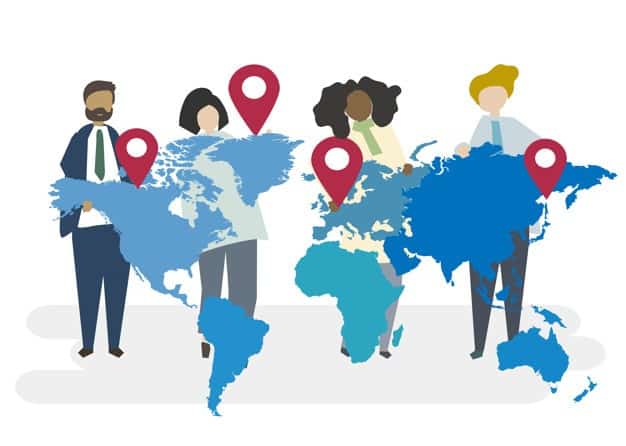|
Listen to Post
|
Listen to this article now:
Localize your content to increase conversions and customer engagement in foreign markets
Whether you are a multinational company or an online business aiming to reach potential customers around the globe, you may have already found out that your approach for entering domestic markets does not have an equal effect in foreign markets. And that is not just because of the language barrier; except for speaking a different tongue, people in different countries also think differently. Slightly paraphrasing one of Ludwig Wittgenstein’s quotes, speaking a different language entails a different perception of the world, thus rendering the limits of this perception primarily linguistic.
As such, when you try to communicate your brand, promote your products or services and engage with your potential clientele, you need to make sure you connect with them with content that is meaningful to them and has the same effect on the different locales as your original content would in your domestic market. To achieve this, you should not settle for just translating your content, but rather go one step further opting for the more creative services of localization, transcreation or even native copywriting which will transform your content into winning material.
Recent findings presented in a Common Sense Advisory report show that 87% of non-English speakers don’t buy products or services on English-language websites, and at the same time 55% of the respondents make purchases only on websites where information is available in their language. If the internet is your channel for sales keep this in mind, along with the fact that out of the 4,1 billion internet users worldwide just 25% of them are native English speakers (Internet World Stats, data as of Dec 31, 2017). This means that in order to connect with the remaining 75% of those users, build a trustworthy profile of your brand for them and convert them to loyal customers and advocates, you need to make sure you become “local” and engage with them in an authentic and culturally appropriate way.
China demonstrates one of the fastest growing e-commerce sales share over the total domestic retail sales, currently at 20% compared to just over 10% globally. This fact, combined with the figure of over 800 million Chinese-speaking internet users, surely renders the Chinese market an alluring target for sales expansion. However, if you fail to make your content, product information and customer support accessible to them, providing those in their language, this share of the market will remain unconquerable for you but will certainly be conquerable for those who decide to invest in a “local” identity in exchange for a promising ROI.
If you are wondering whether China would be an appropriate market for you, website traffic and big data analytics as well as market stats can help you identify opportunities in different geographies and make informed decisions not only about which markets to turn to, but also about the media and the content that would be more effective for reaching out successfully to your target audiences.
According to HubSpot Content Trends Survey Q3 2017, Latin America has the highest preference for video content (64%, compared to an average of 54% applicable to other regions) when it comes to choosing their favorite brands. So, if you are looking into an expansion in the Mexican market, aim for producing some quality videos as part of your content marketing strategy, to increase your brand awareness and the visibility of your products or services. And to ensure those videos get the attention of as many prospects within your target locale as possible, think about investing in audiovisual translation in the form of subtitling or even better dubbing, given that the latter is most common in Spanish-speaking countries.
Of course, such a process of becoming local in order to go global requires a certain budget to cover the costs of translation, localization, transcreation, subtitling or dubbing, depending on the type of content you choose to use for connecting with a foreign audience. But without that, your efforts to create great content for a new market may go unnoticed if they are not combined with equal efforts to make that content linguistically and culturally accessible. And in some cases, the cost may not even be as high as you think, especially if you have already some translations in hand which could perhaps be re-used or even re-purposed for your marketing campaign or your multilingual website or a post on your social media.
While the trend is for companies to go global, one should always keep in mind that people around the world are similar but different, and the differences they present are usually those that matter. As such, those differences should be respected, embraced and reflected in all attempts that the companies make when they aim at establishing true, original and meaningful connections with audiences in different locales.








